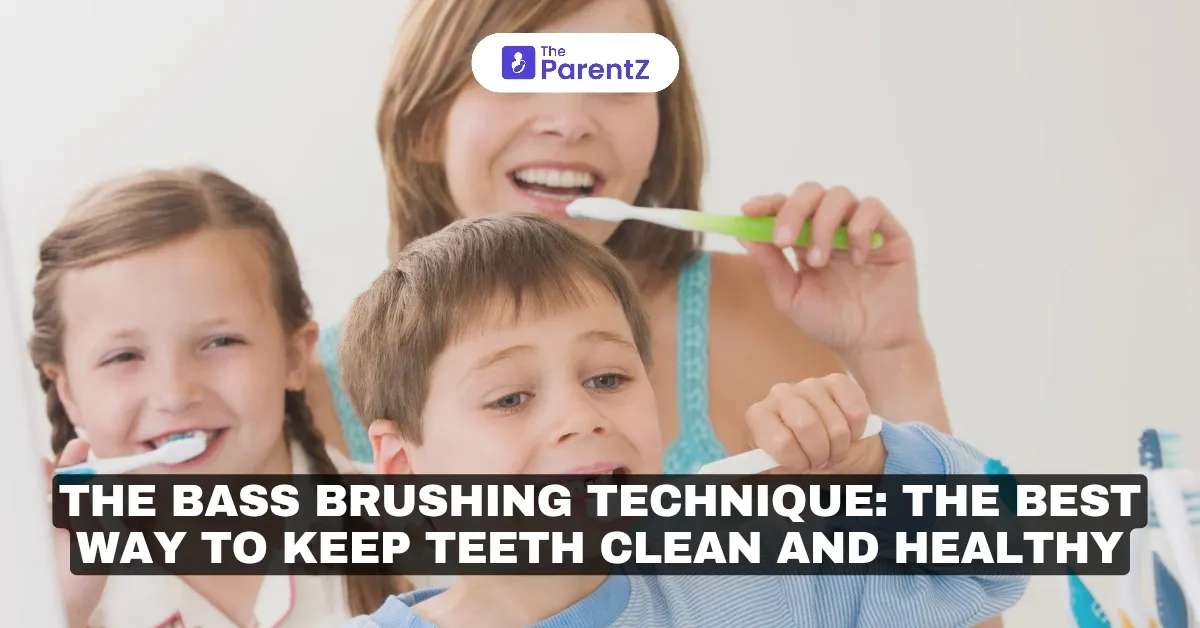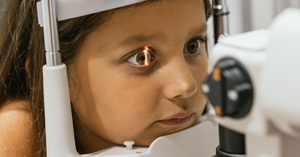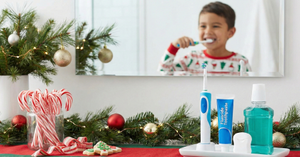What Is the Bass Brushing Technique?
The Bass technique is one of the most recommended ways to brush teeth because it effectively removes plaque and bacteria from the gumline—the most common area for cavities and gum disease.
How It Works:
• Hold the toothbrush at a 45-degree angle towards the gumline.
• Use gentle, small circular motions instead of harsh scrubbing.
• Focus on one or two teeth at a time, slowly working around the mouth.
• Brush for at least two minutes, twice a day.
• Don’t forget the back teeth and tongue for a complete clean.
This technique isn’t just for adults—it’s a great choice for kids, too!
Is the Bass Brushing Technique Right for Your Child?
Yes! The Bass technique is one of the best brushing methods for children because:
• It prevents cavities – The gentle circular motion removes plaque buildup where bacteria thrive.
• It keeps gums healthy – The technique focuses on cleaning just under the gumline, preventing early gum disease.
• It’s easy to learn – With a little practice, kids can master this technique for lifelong dental health.
• It works for all ages – Whether your child has baby teeth, permanent teeth, or braces, the Bass technique is effective.
Dentists recommend this method because it removes more plaque than basic scrubbing while being gentle on gums and enamel.
How to Teach Your Child the Bass Technique
Teaching kids the right brushing technique can be fun and easy! Here’s how:
Step 1: Get the Right Toothbrush
• Use a soft-bristled toothbrush (or an electric brush for older kids).
• A child-sized brush fits better in small mouths.
Step 2: Use the Right Amount of Toothpaste
• A rice-sized amount for children under 3 years old.
• A pea-sized amount for children 3 years and older.
Step 3: Show Them How to Hold the Brush
• Place the toothbrush at a 45-degree angle against the gums.
• Let them practice in front of a mirror.
Step 4: Use Small, Gentle Circles
• Guide them to brush in soft, circular motions.
• Focus on two or three teeth at a time before moving on.
Step 5: Make Sure They Brush for Two Minutes
• Use a timer, a brushing app, or their favorite song to make it fun.
• Encourage thorough brushing—front, back, chewing surfaces, and tongue!
Step 6: Check Their Technique
• Until age 6–7, children need help and supervision to ensure proper brushing.
• Even older kids can benefit from occasional checks and reminders.
Do’s and Don’ts of the Bass Brushing Technique
✅ Do’s:
✔ Use a soft-bristled toothbrush – Hard bristles can damage gums and enamel.
✔ Brush for at least 2 minutes – This ensures every part of the mouth gets cleaned.
✔ Be gentle – Pressing too hard can harm teeth and gums.
✔ Brush twice a day – Once in the morning and once before bed.
✔ Replace toothbrushes every 3 months – Worn-out bristles don’t clean effectively.
✔ Use fluoride toothpaste – Helps strengthen teeth and prevent cavities.
✔ Teach flossing early – Plaque between teeth can’t be removed by brushing alone.
❌ Don’ts:
✘ Don’t brush too hard – Scrubbing damages gums and wears down enamel.
✘ Don’t rush – Brushing too quickly misses plaque and bacteria.
✘ Don’t skip the back teeth – Molars are where cavities form first!
✘ Don’t forget to brush the tongue – This helps keep breath fresh.
✘ Don’t let kids swallow toothpaste – Too much fluoride can be harmful.
Is the Bass Technique the Best? Absolutely!
There are many ways to brush teeth, but the Bass technique is one of the most effective and dentist-approved methods.
Here’s why it’s better than basic scrubbing:
• It cleans deeper – Small circular motions reach areas that straight scrubbing misses.
• It’s gentle on gums – No harsh scrubbing means less risk of gum damage or recession.
• It removes more plaque – Cleaning near the gumline prevents cavities and gum disease.
• It’s easy to learn – Kids can master it with practice and supervision.
If you want your child to have strong, healthy teeth for life, the Bass technique is the way to go!
Making Brushing Fun for Kids
Children are more likely to brush properly when it’s enjoyable! Try these tips:
🎶 Play a Two-Minute Song
• Use their favorite music to make brushing time fun.
• There are also brushing apps with built-in timers!
🌟 Use a Brushing Chart
• Reward consistent brushing with stickers or small prizes.
• Make it a game to complete the chart each week!
🦷 Let Them Pick Their Toothbrush
• A brush with their favorite color or cartoon character makes brushing exciting!
🧚 Tell a Brushing Story
• Make up a story about “cavity monsters” hiding in their teeth that need to be brushed away.
When to See a Dentist
Even with great brushing, regular dental checkups are essential!
Schedule a visit if your child has:
• Tooth pain or sensitivity
• Bleeding gums
• Persistent bad breath
• Loose or chipped teeth
A dentist can check if your child’s brushing technique is effective and help them keep their smile healthy!
Final Thoughts
Brushing is a lifelong habit that starts in childhood. Choosing the right technique makes all the difference!
✔ The Bass technique is gentle, effective, and recommended by dentists for kids and adults.
✔ It removes plaque, prevents cavities, and keeps gums healthy.
✔ It’s easy to learn and works for every age.
Start teaching your child the Bass technique today and help them build a strong, healthy smile that lasts a lifetime!








Be the first one to comment on this story.